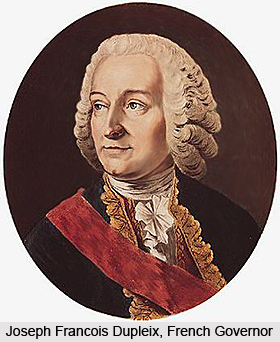 History of Yanam District sketches the political scenario of this part of the country, beginning from the French settlements till India attained independence. Yanam is one of the districts of the Indian Union Territory of Puducherry, in the southern portion of India. During 1723 A.D., a warehouse was established by the French in this district. It was recaptured in 1742 A.D, after it was surrendered in 1727 A.D. Initially, Yanam was named `Inam`, which was later modified to `Yanam` or `Yanaon`. Historical accounts state that Yanam District was granted to Mr. Bussy, the then French General by a ruler of Vijayanagar Empire, in a conflict against the Bobbili kings.
History of Yanam District sketches the political scenario of this part of the country, beginning from the French settlements till India attained independence. Yanam is one of the districts of the Indian Union Territory of Puducherry, in the southern portion of India. During 1723 A.D., a warehouse was established by the French in this district. It was recaptured in 1742 A.D, after it was surrendered in 1727 A.D. Initially, Yanam was named `Inam`, which was later modified to `Yanam` or `Yanaon`. Historical accounts state that Yanam District was granted to Mr. Bussy, the then French General by a ruler of Vijayanagar Empire, in a conflict against the Bobbili kings.
Indigo wells or `Neelikundilu` existent at the western side of Yanam indicate the presence of the Dutch who had constructed a front here to store their currency which were said to have been minted at Neelapalli village. The Compagnie des Indes of France had set up a trading post in Yanam District in 1723 A.D. However it was abandoned after four years since their commercial transactions were unsuccessful. During 1731, it was occupied again during the age of Dupleix. The history of the period from 1723 till 1750 A.D. is shrouded in mystery, since proper historical records are not available regarding this period. Muzaffar Jung, Nizam of Hyderabad confirmed the sovereignty of this region in 1750 A.D. The `parganas` of Rajahmundry, Chicacole, Ellore and others were submitted to Mr.Bussy by Salbat Singh, the then Subedar of Deccan, during 1753.
It can be assumed that Yanam District was governed by the English from the period of 1753 till 1765, as there is again a lack of information dating to this age. A certain document has revealed that Kapuapalem and Yanam villages were passed to the French Commissioner named Yoan Yacques Panon by George Dolben and Jean White Hill. The French were permitted to conduct trade at Yanam, thanks to a `paravana` issued by a Rajahmundry ruler, as well as another one from Nawab Nizam Ali.
Yanam District was located in Peddapur province during the reign of Timma Raja. A tiny building was erected near Coringa River by the French. Some documents belonging to the period of 1765 claim that a fair or weekly market was held in Yanam District, particularly on Tuesdays. Residents of Yanam used to visit this fair for purchasing various commodities. During this time, Neelapalli, a village close to was controlled by the British, which is situated at a distance of nearly 3 km from the district of Yanam. However, this weekly fair started to be conducted during Saturday instead of Tuesday.
During 1785, Yanam District was again submitted to the French. This place was taken possession by Mallhendre, who was succeeded by Bhuter. These rulers were asked to facilitate the commercial transactions and trade conducted by the French and also to promote the trade of certain influential merchants. Sonnerat was the next king of Yanam in the year 1790, and he was fond of natural sciences and also the Telugu language.
Trade was carried out with rice, oils, teakwood and many other materials. It is believed that the English exercised a good control over the `circars` in this Indian district during this time. The French were motivated to enter into secret agreements with the regional chieftains of Yanam District, which bears testimony to the fact that this area was a commercially significant place. Salt used to be manufactured here and was an important industry, as well as cotton goods which were exported to France with the aide of ships which visited India. Some French citizens who resided in Yanam District were not interested in administration or regional politics of Yanam and instead pooled their resources in these lucrative businesses. The Chief of Yanam, who was Mr.Sommerat was associated with this trade, along with many other merchants.



















